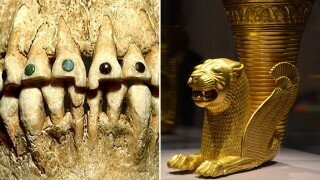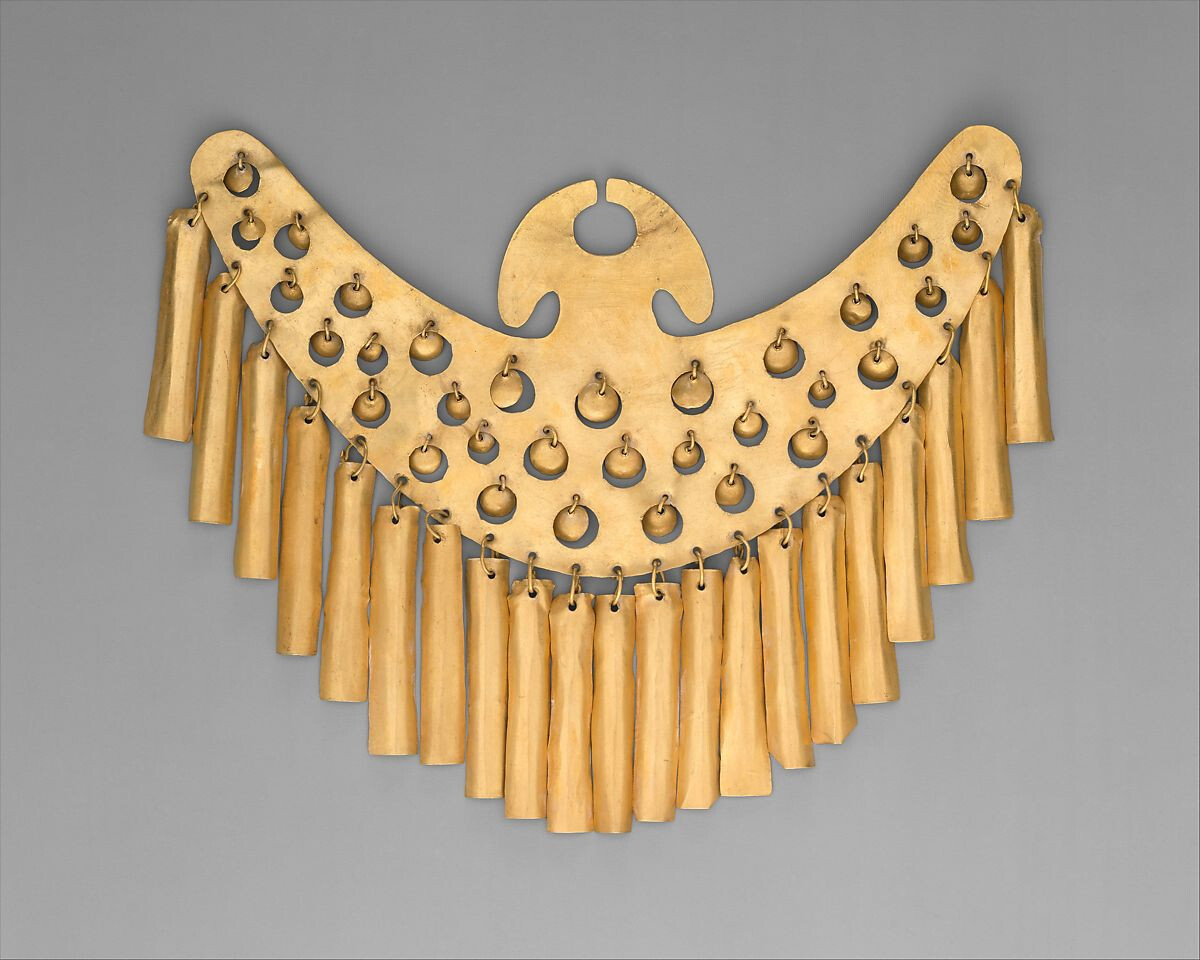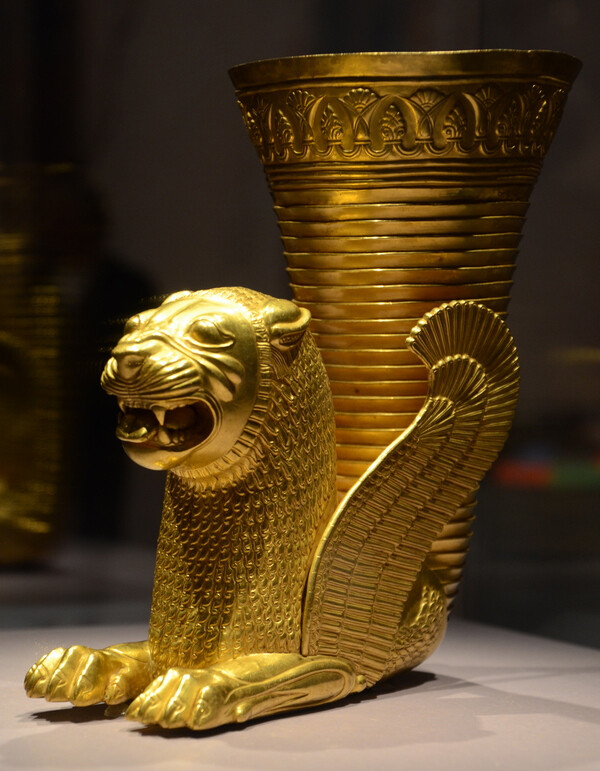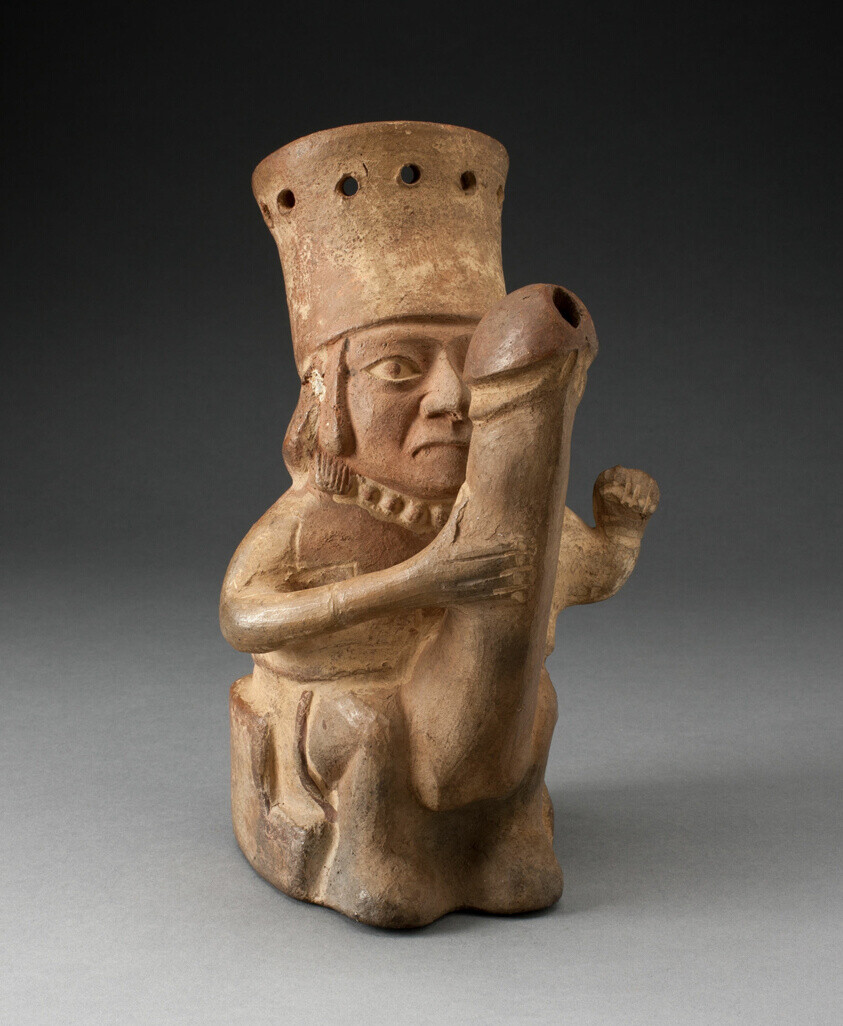8 Historical Items And Styles Much Cooler Than Ours

Throughout history, we’ve grown less creative and stylistic. People are applauding each other and themselves for dispensing the same tired memes, fashions, styles, designs, arts, and crappy Monty Python quotes from 80 years ago or whenever it was made. Plus, punctilious posters pungling presumably punchy puns should be punitively punished. Everyone knows puns are the poor man’s alliteration.
Old-timey individuals were more artistically creative, and it transferred to most facets of daily living. When the expected lifespan was 25 years due to wild boar attacks, infections, and getting your beard caught in windmills, looming death-inspired imaginativity, I guess.
Sadly, countless insipidities are now standard. So take a look around your house—how many of your possessions possess real style, and how many did you buy because Spider-Man or Ronald Reagan told you to, via The Global Plastic Conglomerates’ illegal and Chinese-manufactured commercial Dream Interjector machine?
Don't Miss
Regardless, please prepare some trash bags, then enjoy the historical style trends that put our arts, items, and decorations to shame ...
Nose Ornaments
Pre-Columbian Pan-Americans, like the Moche (A.D. 200-850) of Peru, made many fine things, including “nose ornaments.” These dangled from one’s nose in golden or silver glory to obscure the lower half of their face in prestigious majesty. Some have danglies that make noise.

Imagine that thing clinking loudly over the noise of a jackass coworker trying to tell you about going to Spain and having the best chicken tenders ever. Or how the Kings should play the long game, trading every draft pick through 2040 in exchange for a cryogenic vial of Splash Brothers DNA.
Nose ornaments feature many designs, including shrimp, spiders, bat, and Halloween-store-brand “Red Overalls Italian Plumber Brother Mustache,” though the latter has been lost to culture-robbers and probably resides in a backroom in Seville.


Nose ornaments shine with Andean cosmology, which regarded gold and silver as divine, animate materials imbued with “conflicting and complementary” dualities: the Sun and Moon, day and night, male and female, right and left. Therefore, the conjoining of these precious metals “visually and metaphorically, symbolized harmony and balance.”
Unity of minds, equality of genders, and cosmic order are portrayed through a dazzling facial ornament in the motif of the Moon giving the Sun a rusty trombone. Compared to that, walking on water or manifesting a platter of herring are little more than parlor tricks. How far our lore has fallen since the days of Moche ideology.
Rings
Modern earrings are meh. From picking out Mother’s Day and other holiday-related presents in the past, it is observed that 99.9% of them are vapidly generic. How can one show that special lady, or hazily remembered automaton, “The Matron,” how one really feels with an unimaginatively ubiquitous heart, teardrop, or concentric-whatever shape?
No, Cartier, motherly and romantic love are not displayed commensurately to the number of “laborers” that perished in a mine, so I will not be perusing your wares, even as a majorly successful, multi-hundredaire freelance writer. Instead, I suggest going back, style-wise, potentially millennia, to the days of more intricate ear adornments:

Met Museum
This 2,300-year-old Greek piece is made of 100 components and represents the winged victory goddess Nike with two broncos suspended from a honeysuckle palmette. Nike wears a tunic, belt, skirt, and multiple pieces of jewelry. In antiquity, even the jewelry that adorned a jewelry was more creative and richly motif-laden than today’s jewelry on jewelry.
The Museum of Fine Arts Boston acquired it from one Edward Perry Warren for $70,000 as Warren whispered haha suuuuckersss, and surreptitiously replaced the lid on a crate of Nike earrings with the gold paint chipping off.
Elsewhere, the previously mentioned Moche wore “earspools,” mini-mosaics made of turquoise, mother of pearl, and other treasures circumferenced by resplendent elements. They required a stretching of the ear-holes, like the auricular gauges of today, worn by excellent and good people that guzzle MD 20/20s in a parking lot then ping scavenged golf balls at the adjacent Honda dealership.

The same monopoly-approved laziness that adorns ears also embellishes millions of modern fingers. Instead of furthering atrocities by buying rocks dug by “workers” at unventilated McEmerald Mines, wouldn’t you rather wear a castle on your hand:

It belongs to a mostly lost lineage of similar rings from European Jewish communities of around the 14th century. It depicts the Temple of Jerusalem, and its band is the clasped hands of the betrothed couple. It’s a communal ring, which poorer couples would borrow for the wedding ceremony. Communal diaphragms and other forms of reusable collective civic penis-catchers remain thankfully undiscovered.
Pectorals
Neckwear has also devolved. Check out the following, a “pectoral” that hung about one’s pectorals to show prominence. It was made by the Edo people of the Court of Benin in modern Nigeria.

Created in the early 1500s for a king, or Oba, named Esigie, it represents his mother Idia. Ivory was majorly holy, symbolizing Olokun, an Orisha (deity) of the sea—basically West African Poseidon, but sometimes portrayed as a woman or androgynous deep-oceanic being because it’s all good under the sea, just like in the Little Mermaid song.
The crown portrays mudfish, living on both land and in water to symbolize the king’s divinity and humanity. The mudfish are interspersed with visages of Portuguese traders because the Edo people happily included European visitors in their sacred artworks, presumably with the caption “Hangin’ w the new BFFs!!!” Initially, the Portuguese traded valuables like copper and coral but later repaid the Edo kindness and respect with, well, you know…

Dead Bird Bonnets
One fortunately-lost style was that of bird-hatting. The Victorians treated the natural world with exponentially less respect than I treated the biospheres of Skyrim. Attempting to “feel closer to nature,” they slaughtered it for their bonnets and other accouterments. A fine lady’s bonnet could feature feathers, avian body parts, or entire carcasses, making it perfect for the day’s main sporting attraction, strangling geese. At least until the invention of competitive chimney sweeping.

Many hundreds of thousands of birds were killed for these terrible death fashions, judged coquettish by a people that had crusty sex through 13 layers of undergarments while chanting the Pater Noster.
Some apparel ostensibly endowed its wearer with specific perks. This late 19th-century accessory set “made from the heads and feathers of gulls” negates the poison damage from carnival food, which back then included stray-dog-brain sandwiches, and today includes candied sweet-sugars, deep-fried stray-dog-brain sandwiches, and popcorn fallen in puddles of indeterminate oil.

But hey, now that you’re looking real slick, hopefully sans carcass-hat, it’s improper to chug celebratory beers from disposable cups lined with HSV-1 lipstick stains and cigarette ash.
Rhyton
Ancient celebrants drank from a rhyton, a stylized, ritualistic drinking vessel (i.e., ritualistically getting blasted) in the form of natural or mythical animals, among other things. Rhyta were mainly used in the Near East and the Mediterranean over the past 4,000 years. Some cannot be set down without spilling, so you’re committed to whatever you poured into it, community college-style:

Just picture drinking your nightly brew from an Achaemenid (Persian) winged lion covered in Eazy-E’s Jheri curls:

Besides party favors, ceremonial devices, and burial items, rhyta were gifts and vessels for statecraft. Though modern politicians, after long days of accomplishing nothing while eating prawns, savor their much-deserved libations from crystal cups or the navels of undocumented teenagers from islands ending in “Republic” or “Verde.”
Also, fun fact, “rhyton” comes from the Greek root rheo, meaning “to flow,” leading to fun fact #2, regarding the diarrhea that follows a night of drinking from a vessel you can’t ever set down…

Daderot/Wikimedia Commons
Such vessels transcended hemispheres, serving as “symbols of status and prestige.” The status-seeking virile men of several-hundred-BCE Peru and the Agora, among others, exhibited this prestige by downing leaded wines from big boners:

Pipes
What goes best with drank, other than regretful maudlin sentimentality? Smokes! Modern inhalation culture obsesses over asinine flavors that all end up tasting like double-apple. And inane aesthetics, including bedazzled vapes whose sequins spell out, “Daddy bought this vape for his little bad bitch with his dirty money, I hate him sooo much starry-eyed emoji, heart emoji, robot emoji.”
But the inhalators of yester-centuries featured actual mythos and utility, like folkish tree-beings with a whistle on top—the whistle being the early 19th-century tech equivalent of an atom supercollider, whose shriek dispelled the outhouse demons waiting to steal your wife’s womb.

Carved Meerschaum pipes were talking points in smoking rooms, as are rare DLCs in MMORPG lobbies today, presenting paralyzing dilemmas: “Do I spend this month’s GameStop paycheck on The Celestial Halberd of Reckoning, or an olive jar full of e-girl farts?”

Ilker Murat Gurer/Shutterstock
These 19th-century pipes featured the historical man-favorite topics of action and eroticism while avoiding man-diminishing things they wished to forget, including children and women in universities.
One design that has changed less over the years, gun-shaped smoking paraphernalia, has two purposes: lighting Black & Milds and giving law enforcement plausible legality for shoot-outs.

Via 1st Dibs
Storage containers
Our houses are obstacle courses of crap items. Crap litters counters, crown coffee makers, and overflows from under furniture to create toe-stubbing hazards. Toe stubs are no longer fatal, but hoarding is evinced by the countless individuals crushed beneath the toppling towers of The Clarion Gazette.
Is Crap-Mania a symptom of overproduction in a hopelessly materialistic society? Manufacturers and MegaStore CEOs with a taste for California condor say no, how absurd, absolutely not—please continue consuming as per usual. Your oligarch overlords depend on it.
In fact, it’s the opposite problem: we need more crap for storing the other crap. Many settle for shoeboxes, Danish cookie tins, or the urns of their least favorite grandparent. So let’s re-introduce the pyxis. As per the millennium-old Pyxis of al-Mughira, from Al-Andalus, Islamic Spain:

Steve Zucker/flickr
Pyxides were bestowed upon royal family members for special occasions or awarded diplomatically to strengthen alliances when marrying your own sister wasn’t feasible. The decorations are replete with griffons, falconers, and lions (victory symbols in Arabic poetry) mauling bulls. Pyxides stored cosmetics or perfumes, left open so their fragrances could conceal historical smells, especially in sweltering climes.
Dental Jewelry
Teeth are an unexploited opportunity for flossing—not literally but stylistically, though most also fail the literal aspect. Rappers agree, by expostulating against blood diamonds (and I assume similarly price-gouged minerals, like beryls, though hexagonal crystal systems are rarely as rallied against as the hexoctahedral), while throwing untold monies to bloodthirsty old monopolies for bling.
The ancients of approximately 2,500 years ago also discovered biological mediums for condescending on their fellows.

Especially the Maya, who chipped out chunks of their teeth and then glued gemstones in place with resins that hold steadfast thousands of years later. The tree-based resins are dental grade, with more than 150 compounds that provide antifungal and antibacterial properties.
Maybe we should revisit resins as well for the sake of collective oral health. Dental calculus has become such a comforting taste in our mouths that it’s a front-runner for Ruffles’ 2022 Fall Flavors lineup, along with aortic plaque, career dissatisfaction, and badass opinion shirts with the cuss words censored.